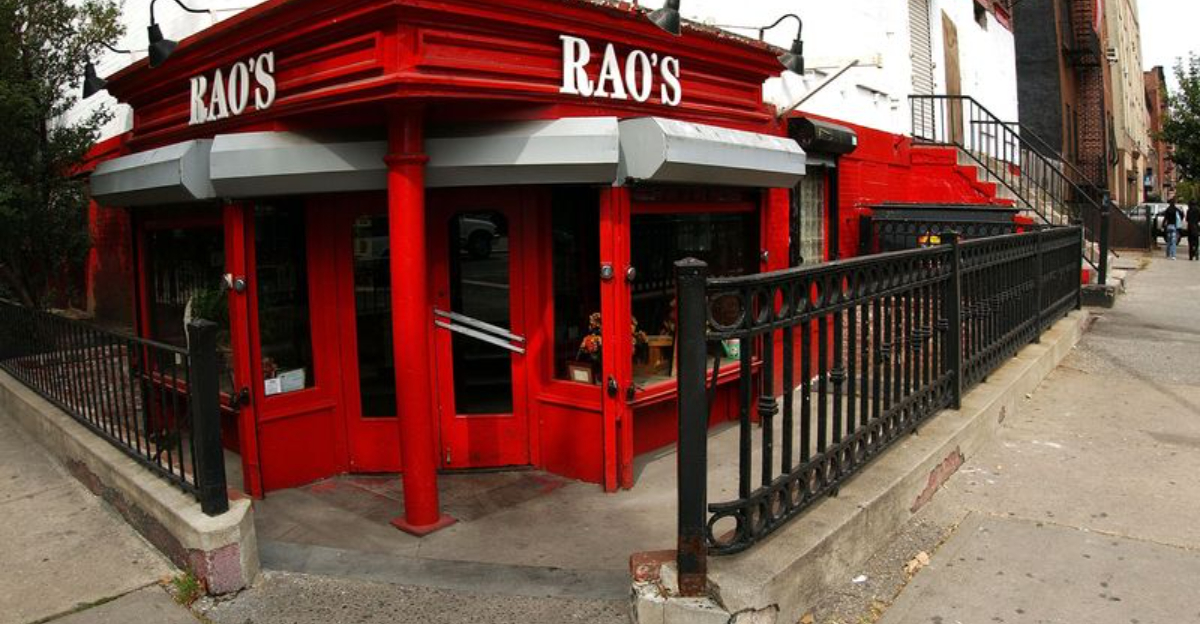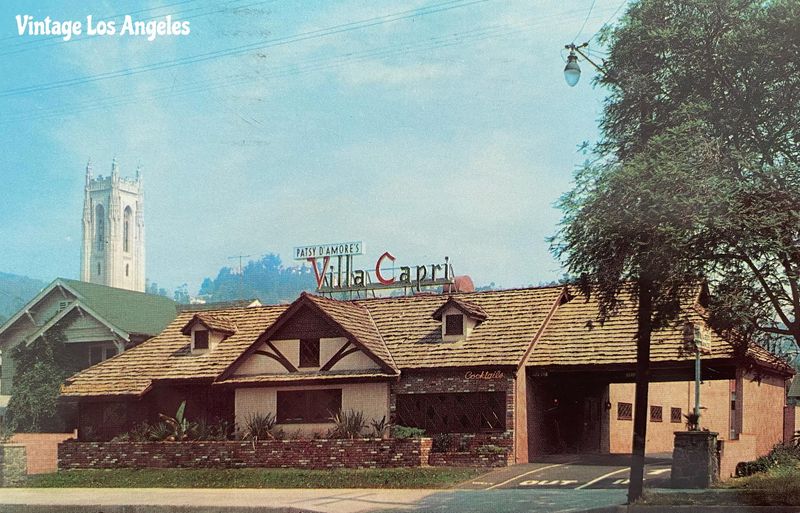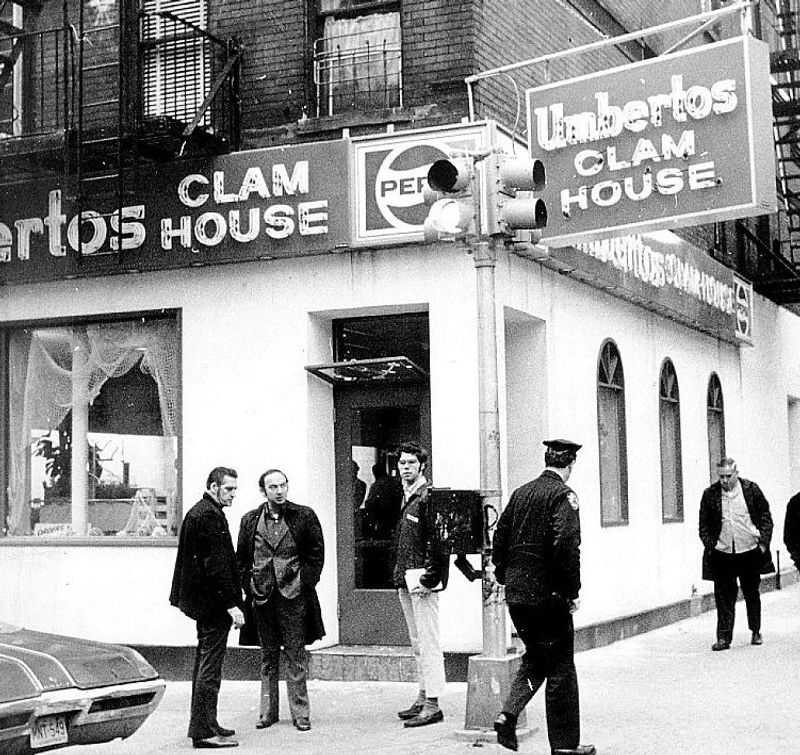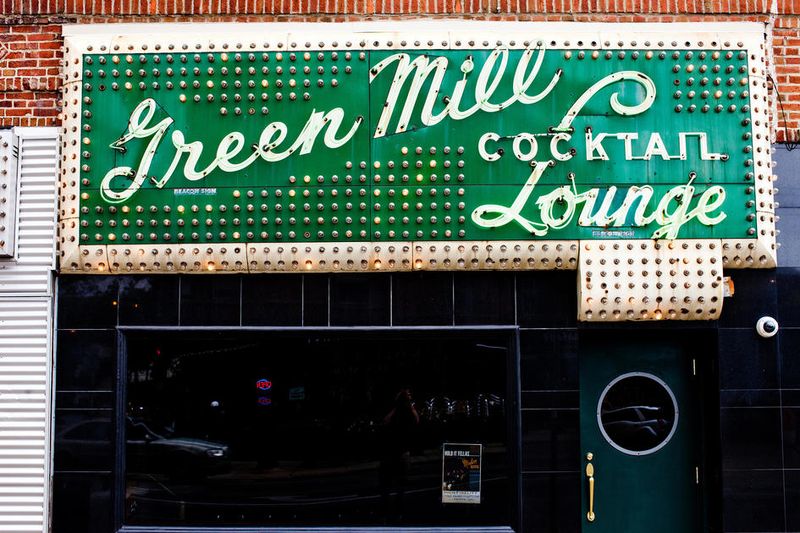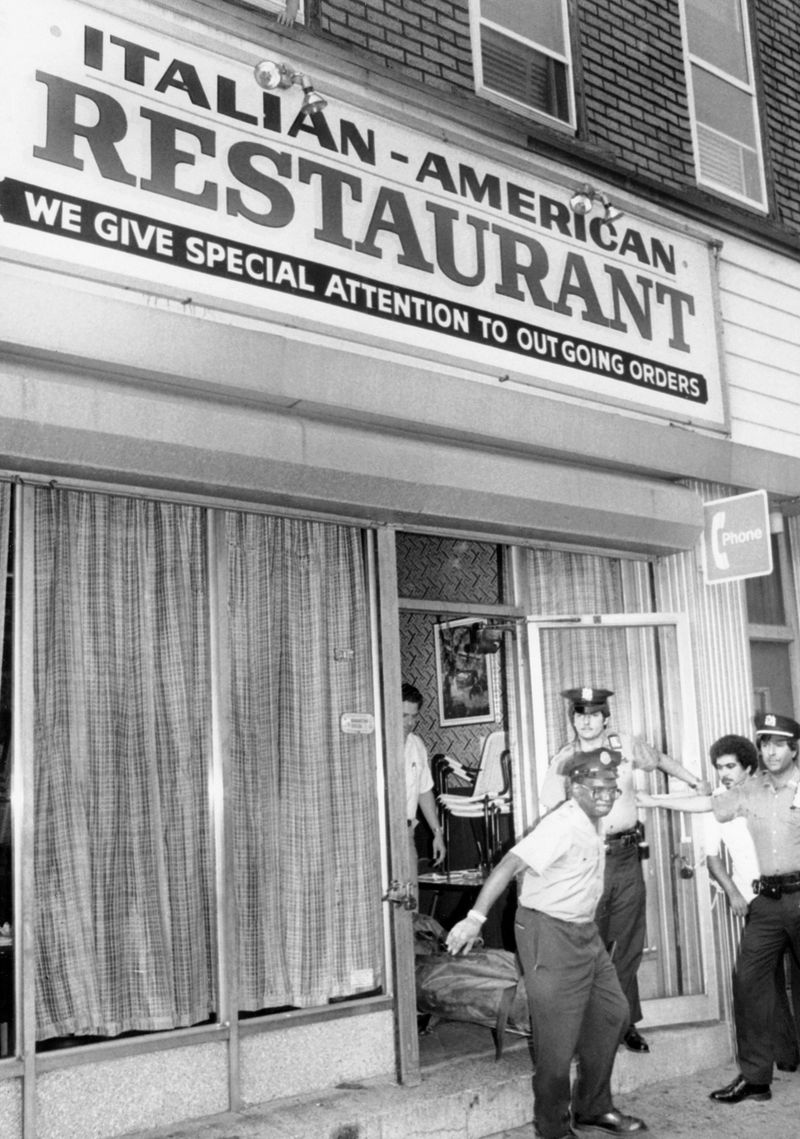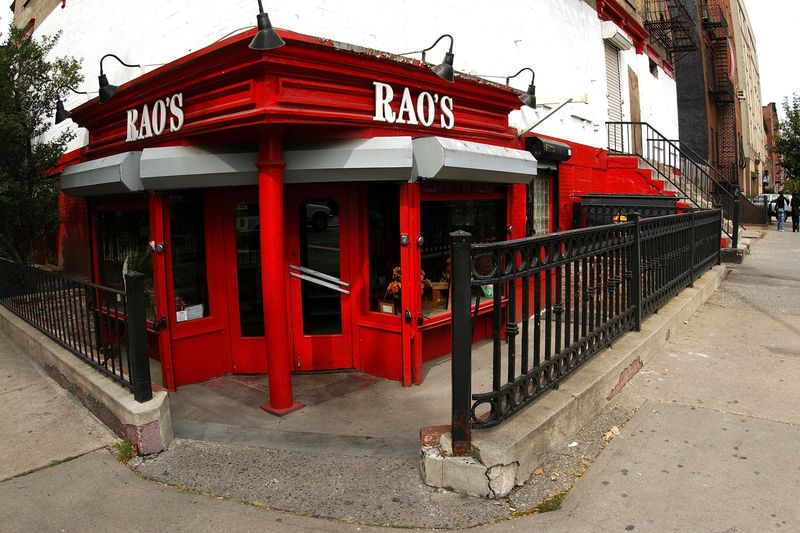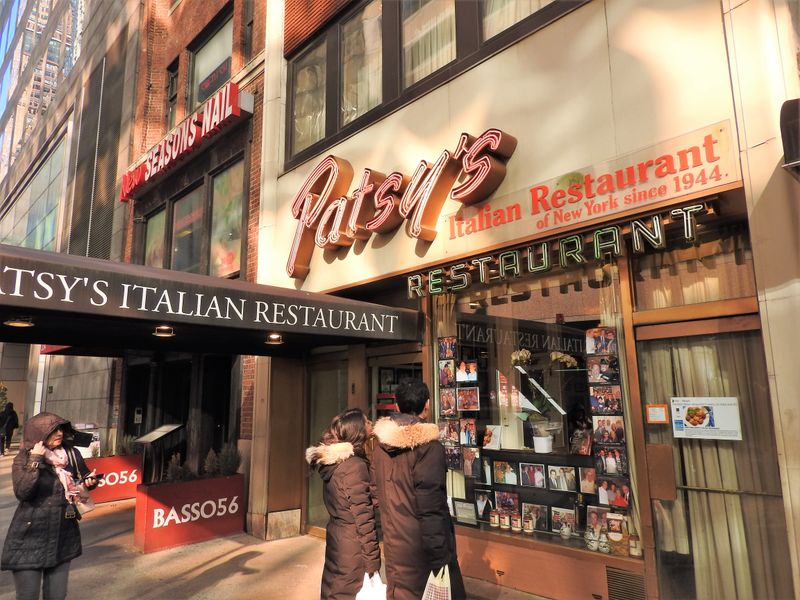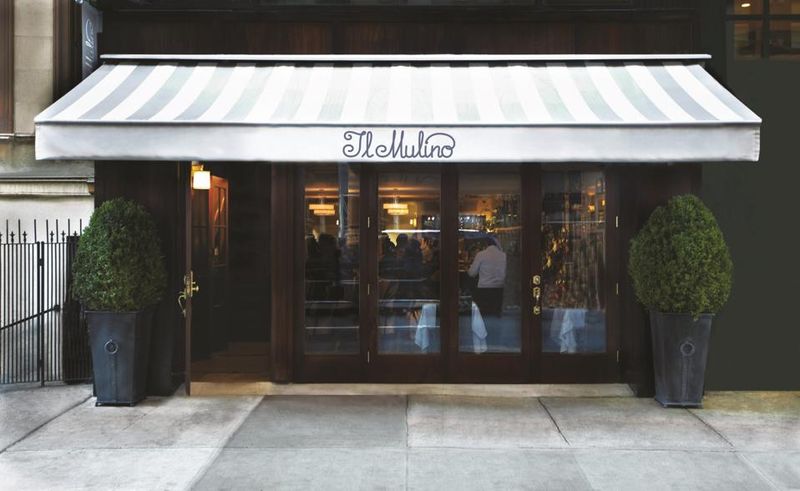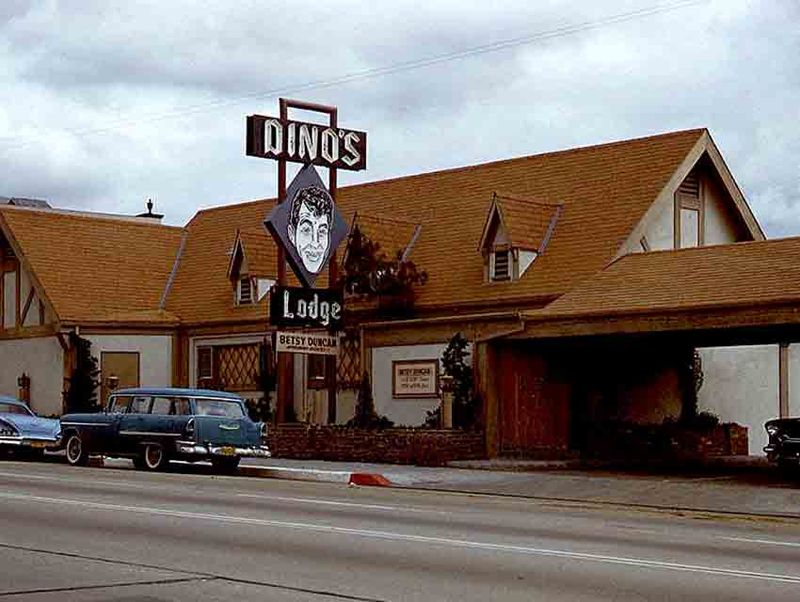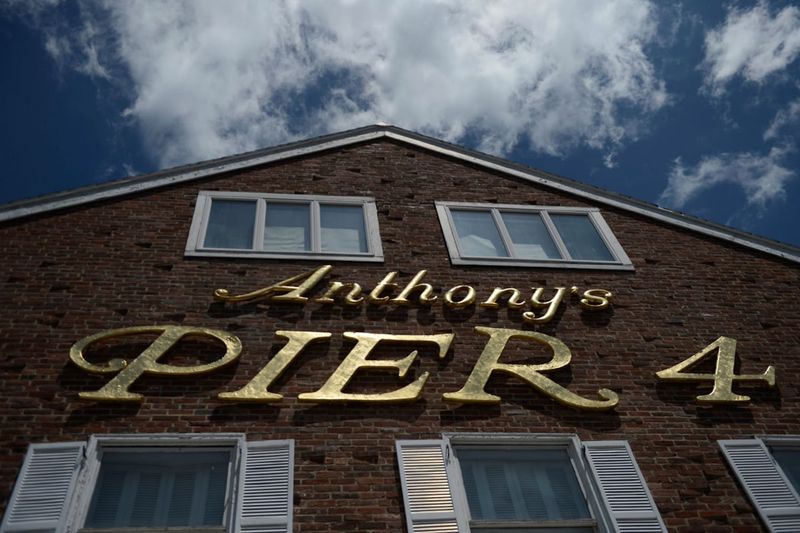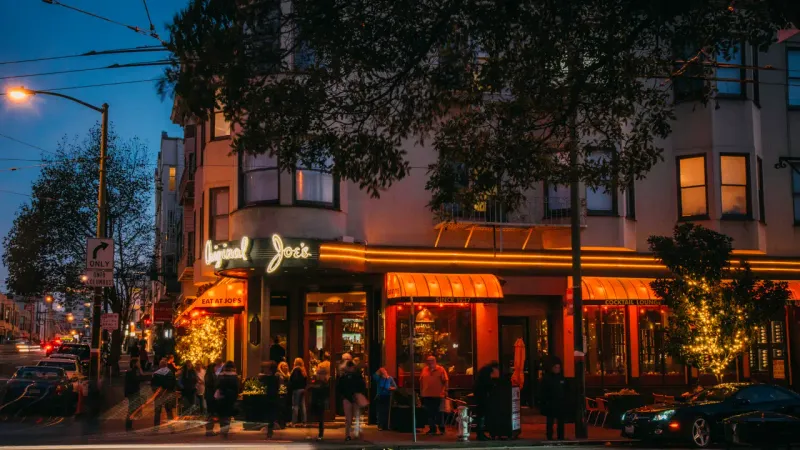You may think of them as your go-to spots for pasta, steak, or a burger and a beer—but behind the booths and bar stools of these seemingly innocent American restaurants lie stories straight out of a mob movie. From secret meetings with crime bosses to full-blown FBI investigations, these eateries served more than just food—they helped cook up some of the most notorious chapters in organized crime history.
1. Villa Capri (Los Angeles, CA)
Villa Capri, a beacon of Hollywood glamour, was more than just Frank Sinatra’s pet project. Co-owned by Sinatra, it became a rendezvous for stars and mobsters alike. The restaurant’s private rooms hid conversations that could sway Hollywood or the underworld.
Stories of deals forged over chianti linger. Mob figures and stars shared laughter and secrecy, the line between the two worlds blurred.
Whispers of Sinatra entertaining both friends and notorious figures enhanced its allure. In its heyday, Villa Capri was synonymous with Hollywood’s dazzling yet shadowy charm.
2. Umberto’s Clam House (New York, NY)
Umberto’s Clam House gained notoriety overnight due to a violent event. Mobster Joey Gallo’s murder in 1972 turned this charming Little Italy spot into a crime scene. Diners witnessed this notorious incident, forever linking the eatery to mafia history.
The restaurant now draws true crime enthusiasts, curious about the infamous event. It capitalizes on its dark past, a testament to how certain places become legendary.
While patrons enjoy seafood, the shadow of Gallo’s assassination looms, making each meal a chilling but fascinating experience.
3. The Green Mill Cocktail Lounge (Chicago, IL)
The Green Mill Cocktail Lounge, with its jazz-filled air, became a sanctuary for notorious gangster Al Capone. His favorite booth offered strategic views, ideal for someone in his line of work.
The bar’s hidden tunnels, a relic of the Prohibition era, speak to its storied past. Bootleggers and gangsters found refuge here, disappearing at the first sign of trouble.
Today, the Green Mill remains a beloved Chicago fixture, blending music with whispers of its illicit past, offering patrons a taste of history and a brush with infamy.
4. Sparks Steak House (New York, NY)
Sparks Steak House’s reputation extends beyond its culinary delights. It became a historical landmark when Gambino boss Paul Castellano was killed outside its doors in 1985. This event, reportedly orchestrated by John Gotti, cemented Sparks in mafia lore.
The steakhouse continues to intrigue visitors, drawn to its notorious past. Diners relish the connection to history as they enjoy their meals.
The allure of a meal at Sparks goes beyond steak; it’s about experiencing a slice of infamous New York underworld drama.
5. Joe and Mary’s Italian-American Restaurant (Brooklyn, NY)
Joe and Mary’s was more than just a restaurant; it was a stage for mob drama. “Crazy Joe” Gallo often chose this intimate Brooklyn spot for his gatherings. Here, the air was thick with secrets and the possibility of violence.
Mob meetings and celebrations marked its history until fate caught up with Gallo. Patrons dined alongside shadows of mob legends.
The restaurant embodies a time when danger lurked behind closed doors, making it a compelling piece of New York’s mafia history.
6. Rao’s (New York, NY)
Rao’s, nestled in East Harlem, offers more than meatballs and marinara. Known for its exclusivity, the restaurant became infamous for its connections to the Lucchese crime family. Diners, unaware of the mob dealings, rubbed shoulders with infamous figures.
In 2003, a fatal shooting over a karaoke dispute spotlighted Rao’s dark side. This small eatery has legends whispered within its walls, from clandestine meetings to mafia quarrels. Patrons were unwittingly part of a mafia tapestry.
With each meal, Rao’s serves a slice of history, making it a unique culinary theatre with a sinister undertone.
7. Patsy’s Italian Restaurant (New York, NY)
Patsy’s, with its old-school charm, was more than a dining destination for Frank Sinatra and his circle. The restaurant’s ambiance, filled with glamour, also held an undercurrent of mob whispers.
Rumors of wise guys dining alongside stars added intrigue. The 1950s and ’60s atmosphere was one of elegance and enigma.
Patsy’s remains a symbol of a bygone era where the lines between celebrity and crime blurred, making it a fascinating culinary cornerstone.
8. The Copa Lounge (Las Vegas, NV)
Within the Sands Hotel, The Copa Lounge wasn’t just about entertainment; it was a hub for the Chicago Outfit. Casino bosses with mob ties orchestrated skimming operations while entertaining guests.
The allure of hidden rooms and bugged phones added to the mystique. The lounge was a stage where Hollywood and the underworld intersected.
Today, The Copa Lounge symbolizes a time when Vegas’s glittering facade hid a darker, complex underbelly.
9. Il Mulino (New York, NY)
Il Mulino, an upscale chain, found itself under federal scrutiny in the 2000s. While famed for its cuisine, it was reportedly tied to a money-laundering probe. This investigation shocked the restaurant community, peeling back layers on mafia influence.
Though nothing was proven, the association lingered in public memory. Diners continued to flock, adding curiosity to its allure.
Il Mulino remains a testament to how even the most refined establishments can harbor hidden depths, blending elegance with enigma.
10. Dino’s Lodge (Hollywood, CA)
Dino’s Lodge, under Dean Martin’s ownership, was more than a celebrity hangout. It was a nexus where Hollywood and mob worlds collided, fostering connections that transcended entertainment.
Reports of mobsters leveraging the restaurant add intrigue. The establishment thrived on its blend of stardom and shadowy dealings.
Dino’s remains a symbol of Hollywood’s golden age, where glamour often masked a darker, more complex reality.
11. Anthony’s Pier 4 (Boston, MA)
Anthony’s Pier 4 was more than just a seafood destination; it was a backdrop for the Patriarca crime family’s dealings. With ocean views providing cover, alleged sit-downs and business negotiations unfolded.
The restaurant’s casual facade belied its role in organized crime history. Diners were unaware of the negotiations occurring nearby.
Today, Anthony’s embodies a chapter of Boston’s history where culinary experiences and crime converged under a tranquil setting.
12. Casa Bella (New York, NY)
Casa Bella, nestled in Little Italy, served more than pasta. It was reportedly a favorite of the Bonanno family. FBI surveillance captured numerous mob meetings, adding to its mystique.
The restaurant’s charm contrasted with the serious business conducted within. Patrons dined amidst history being made.
Casa Bella represents a world where everyday dining and clandestine meetings coexisted, offering a unique slice of New York’s underworld.
13. The Original Joe’s (San Francisco, CA)
The Original Joe’s is a testament to the West Coast’s organized crime scene. While the East Coast dominated mob narratives, Joe’s was a hub for gambling and loan sharking.
The restaurant’s vibrant atmosphere belied its connections to shadowy figures. Patrons might unknowingly share space with influential mafiosi.
Original Joe’s offers a unique perspective on the mafia’s reach beyond New York, blending culinary tradition with hidden stories of power.
